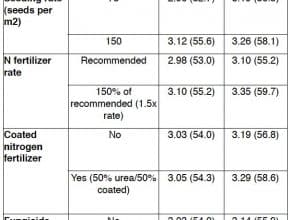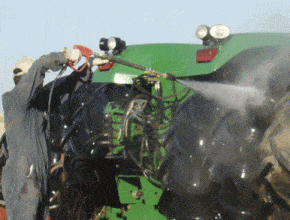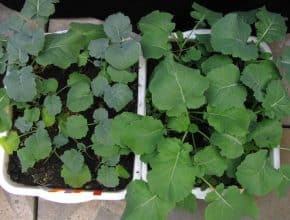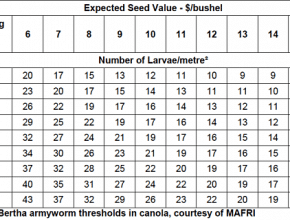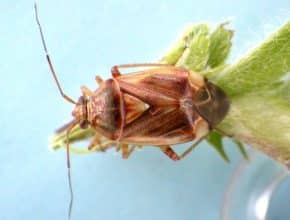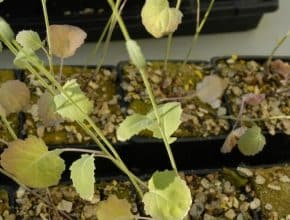Home / Canola Watch / Page 268
-
If you’ve budgeted for hybrid seed and optimal herbicide, insecticide and fertilizer applications, and you’d like to spend a little extra to push yields, consider a higher nitrogen rate. This is the key message from a recent study by Neil Harker and 17 other scientists from across the Prairies…
-
Canola volunteers with resistance to more than one herbicide are probably more common than you think. If you’ve only grown Liberty Link canola, for example, but your pre-seed glyphosate treatment doesn’t seem to be getting all the volunteers, the volunteers may have resistance to both Liberty and glyphosate…
-
If you don't have clubroot, be sure any used or demo’d equipment you buy is clean before you bring it home. Clean equipment before it leaves the auction site or the farm it comes from. Also check that the transport truck is clean. As a precaution, you may want to pressure wash the equipment again when it gets to your…
-
Click here to view an important video about the Canola Market Access Plan. This video as well as the video embedded below played during the Canola Council of Canada convention……
-
Most of you did not get to attend CanoLAB 3-D in Edmonton this week, so this edition of Canola Watch will bring you the highlights…
-
This article contains 5 quick weed control tips. Tip 1: Herbicide efficacy often goes down in dry conditions because most plants — weeds and crop — will develop a waxy layer and curl up their leaves to reduce moisture loss. These two survival responses also reduce herbicide uptake…
-
Growers cannot expect natural enemies to provide enough immediate control to reduce the pest threat to canola in that year. Growers will still have to spray if economic thresholds are reached. The key is to pay attention to thresholds and spray only when necessary. This will help maintain the natural enemy numbers…
-
Our current economic threshold tables for lygus in canola may be too low when applied to current canola production systems across the Prairies. If the stand is healthy and growing fast, growers are reportedly doubling or tripling thresholds. There is no data to support this, but future research needs to reexamine the thresholds with respect to our newer varieties of…
-
Visual assessment of symptoms is not good enough for an accurate diagnosis because symptoms can have many causes. The station hosts used purpling as an example. Purpling is often considered a tell-tale sign of phosphorus deficiency, but purpling is actually a response to any stress…

